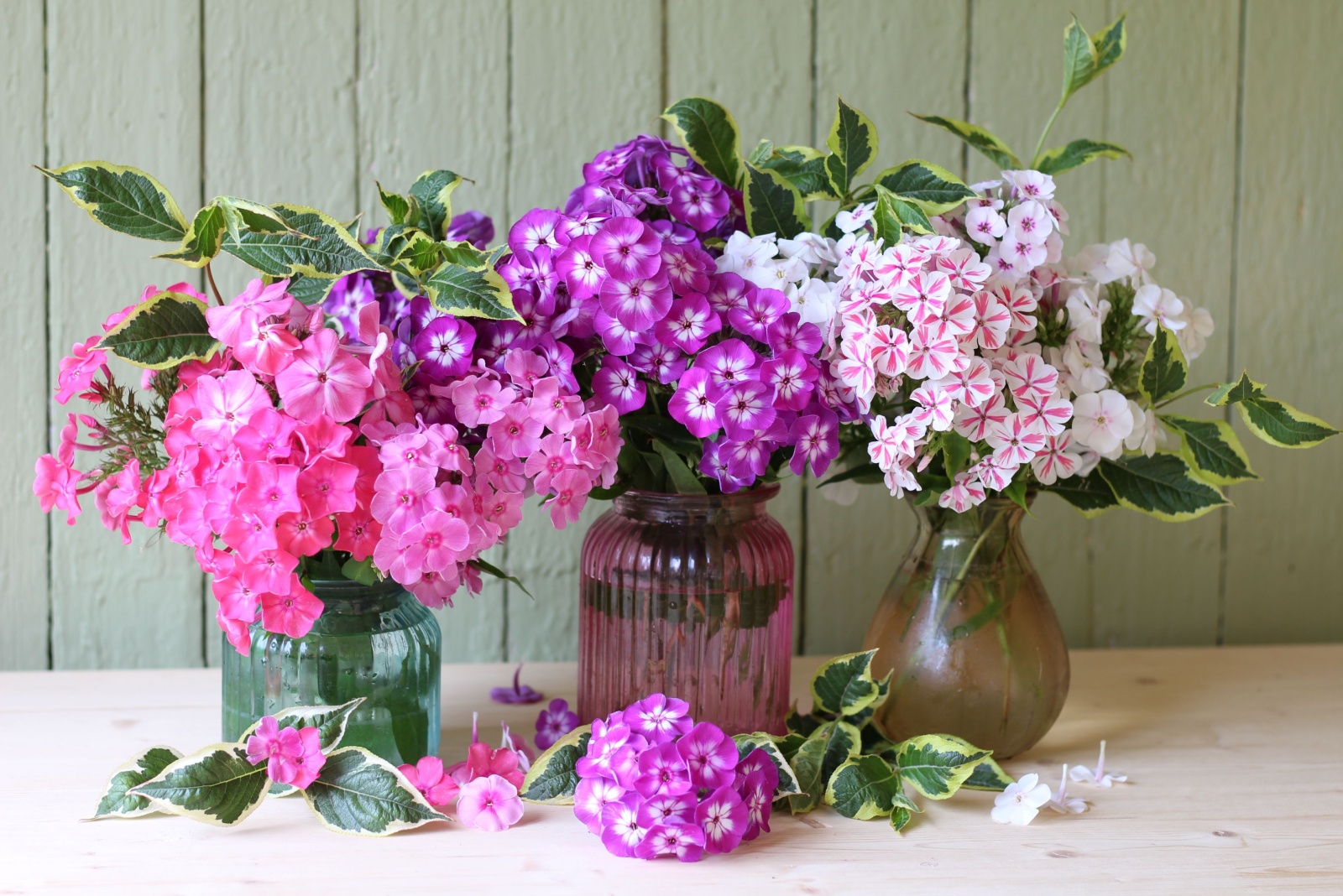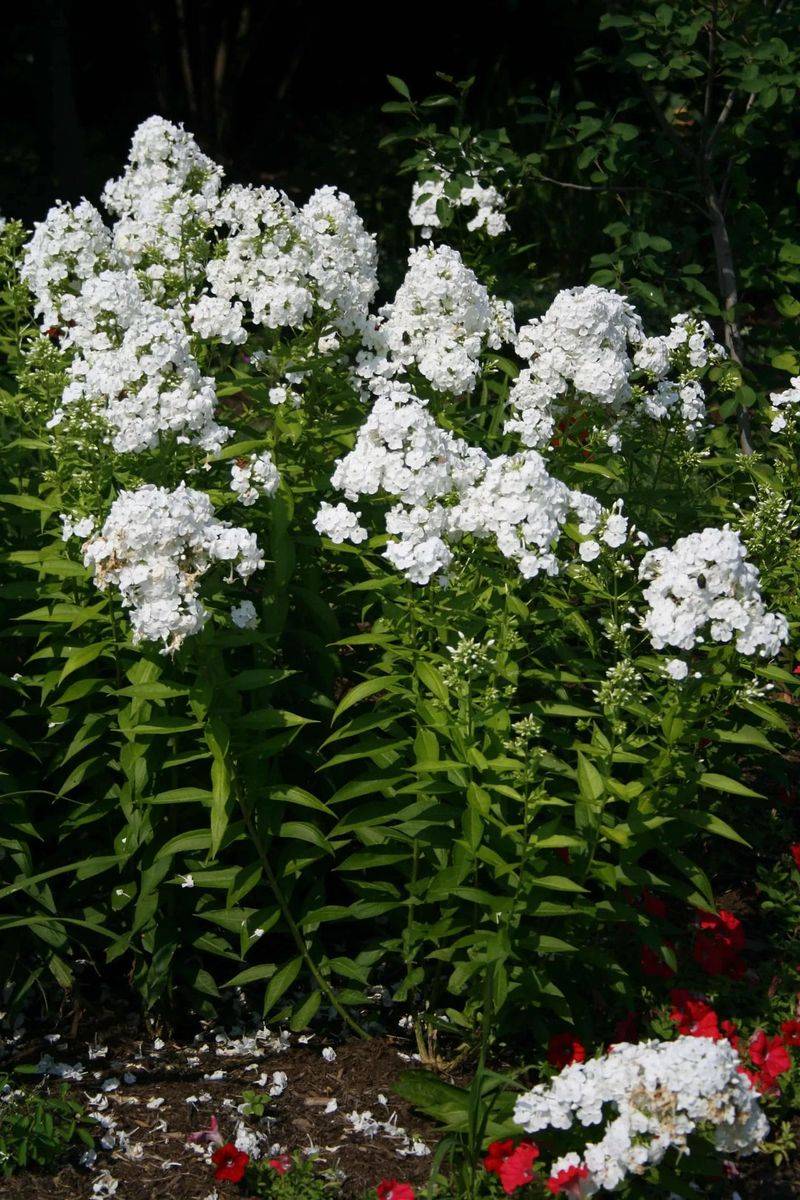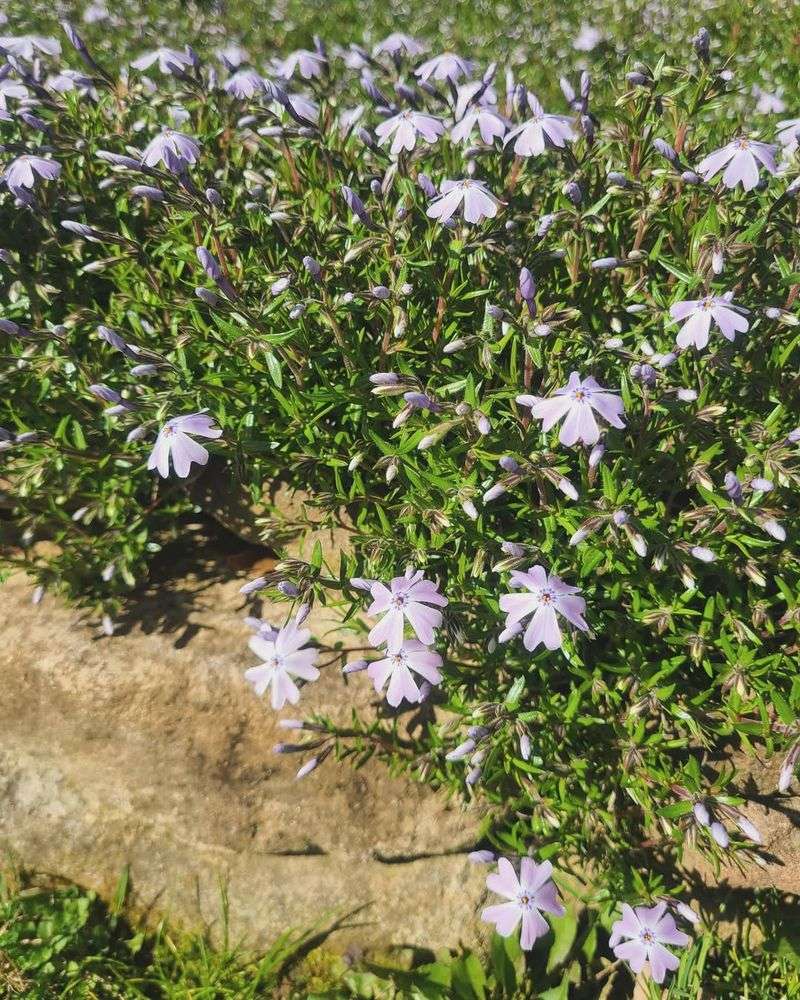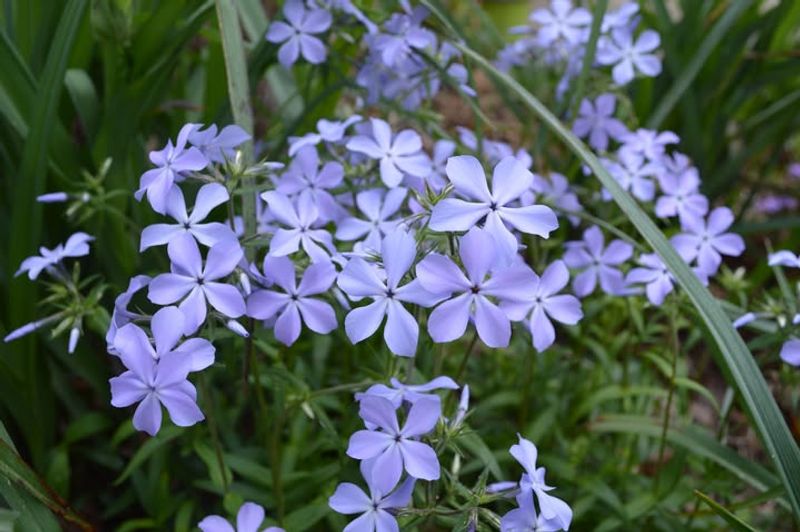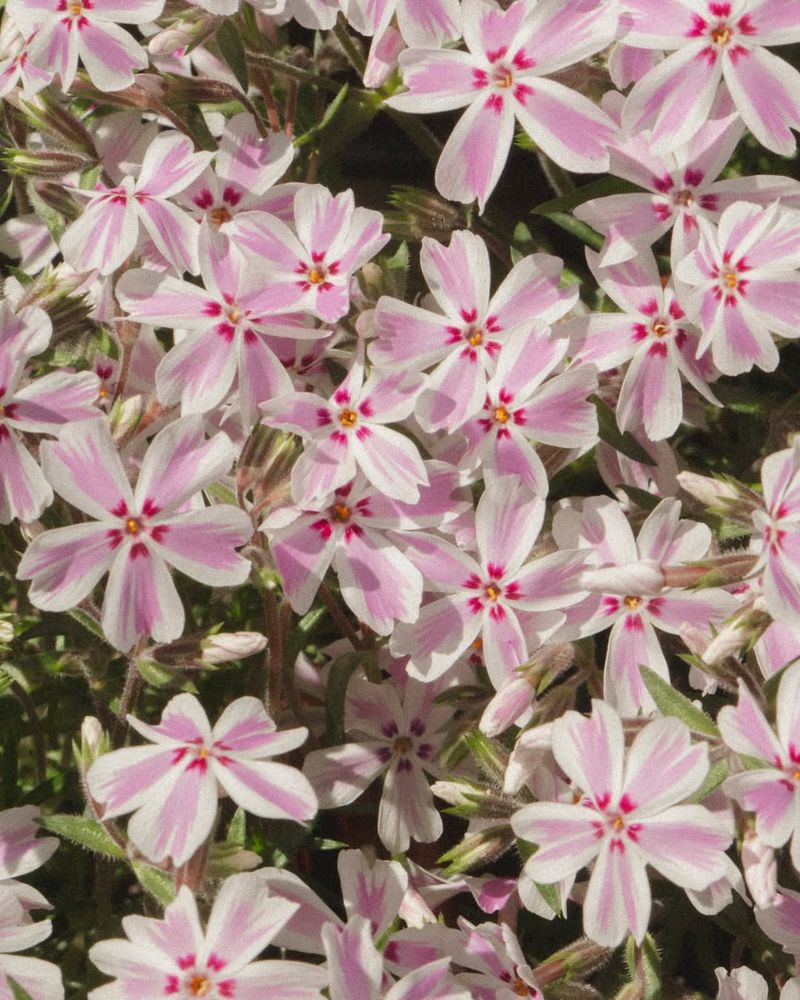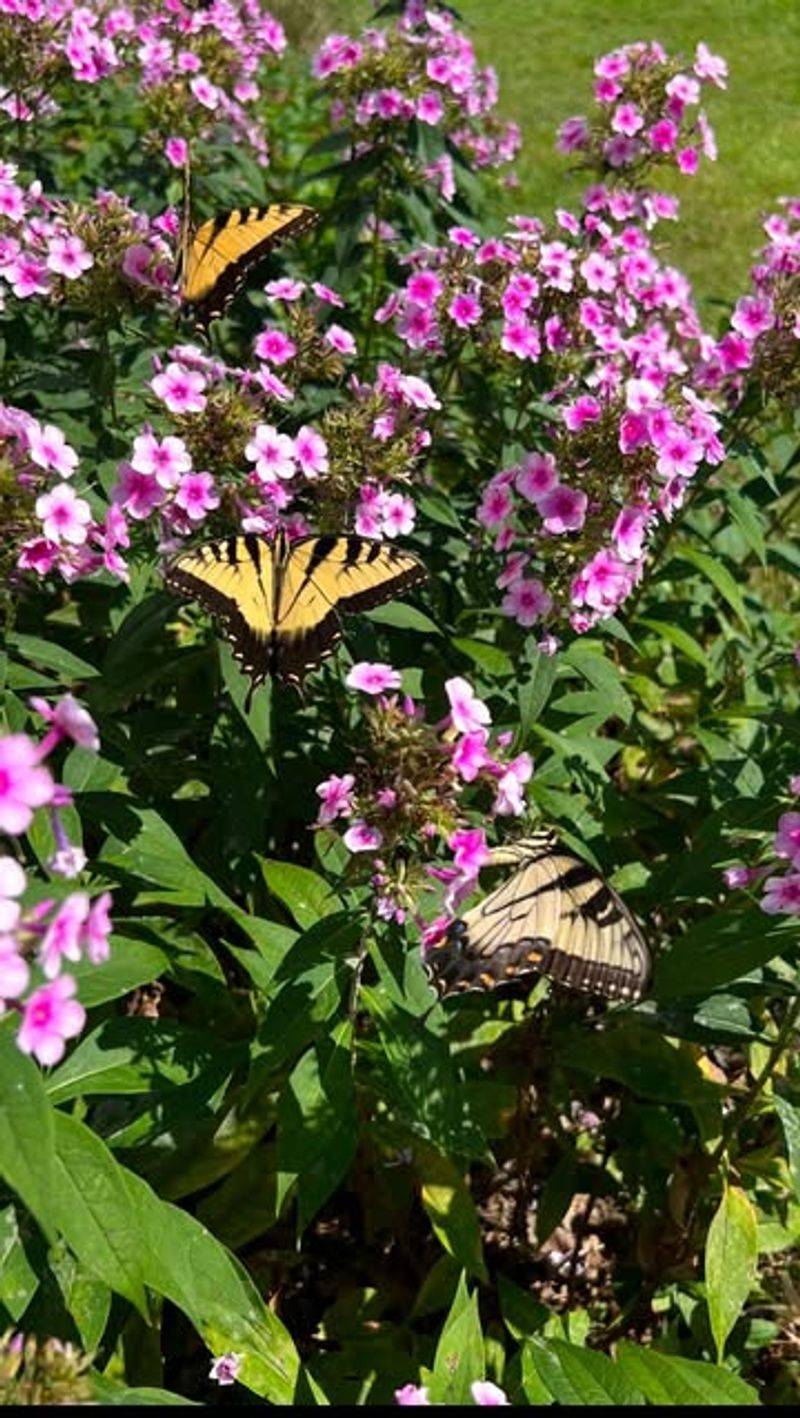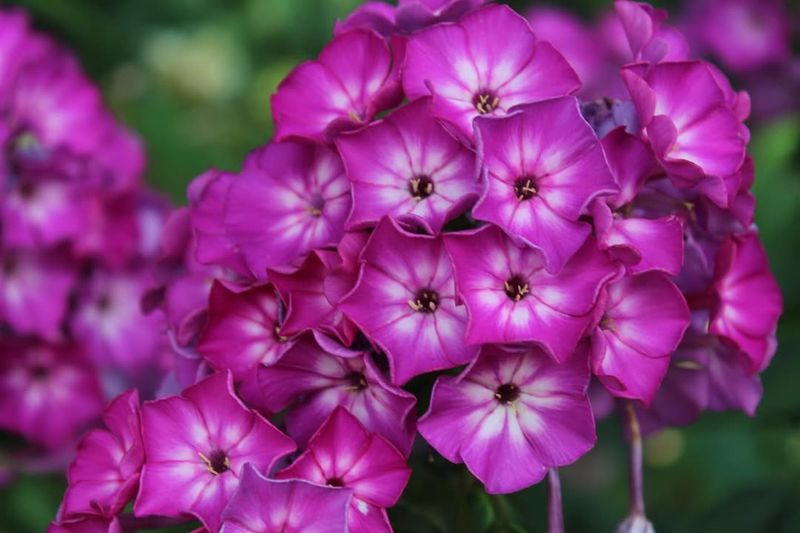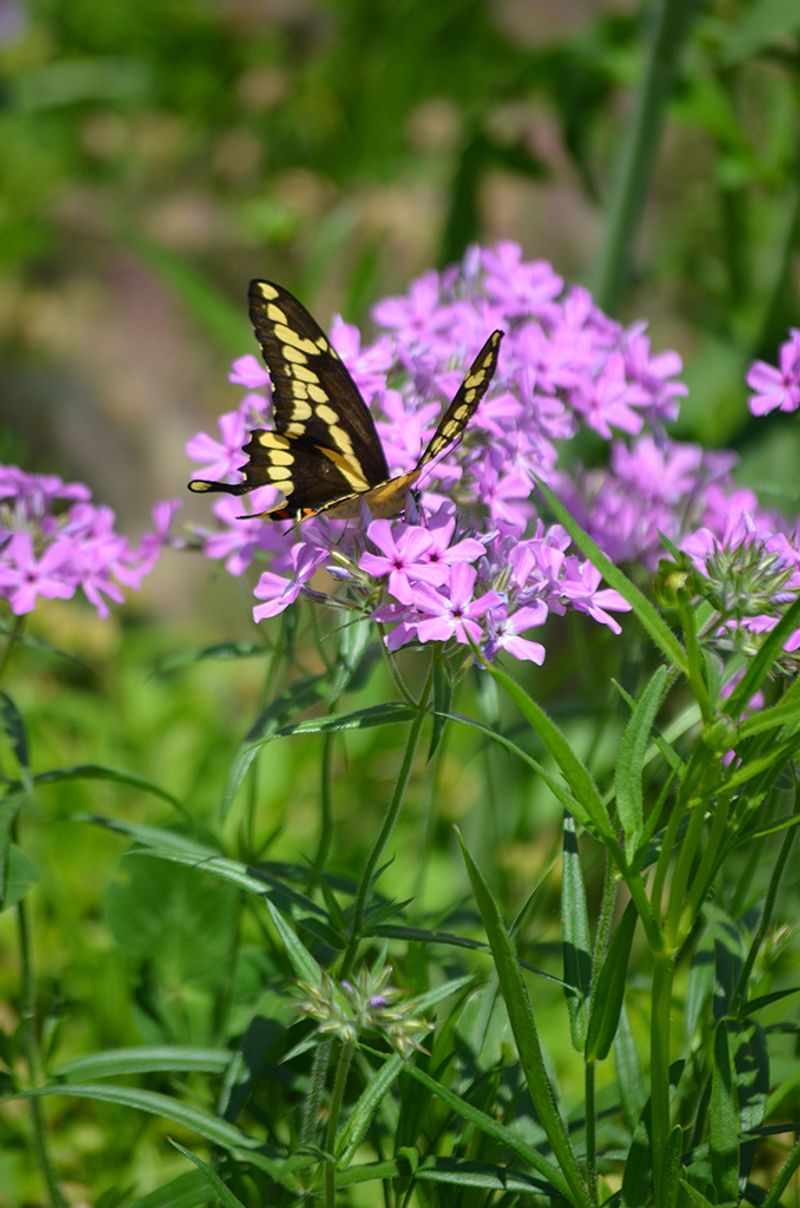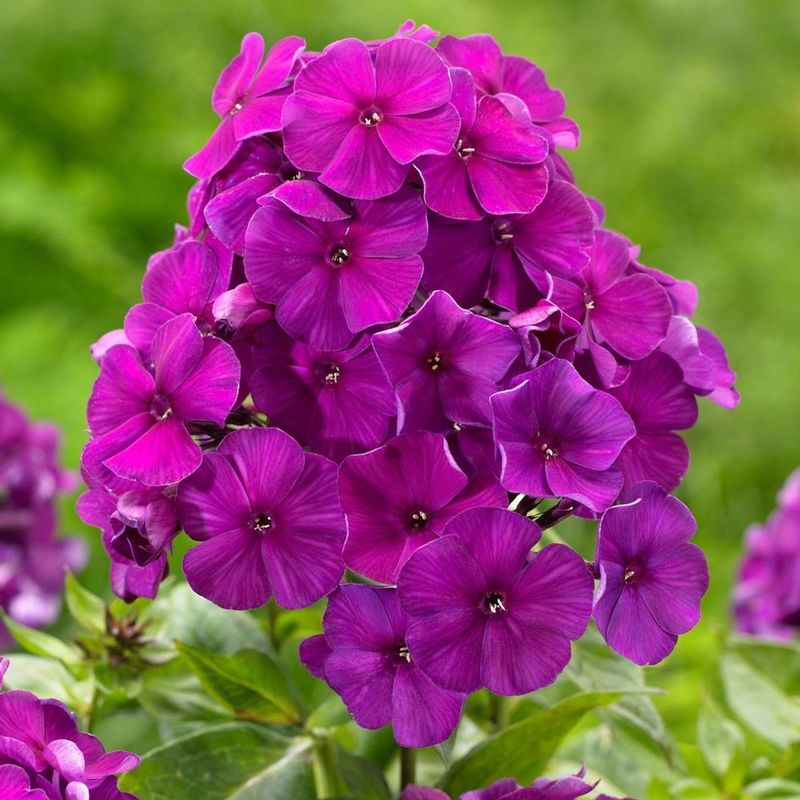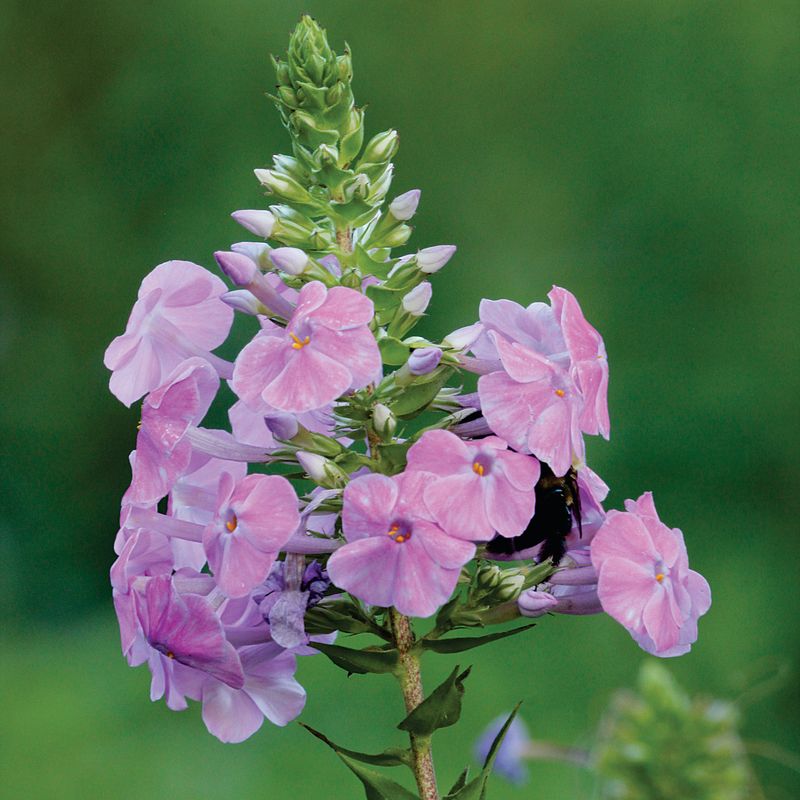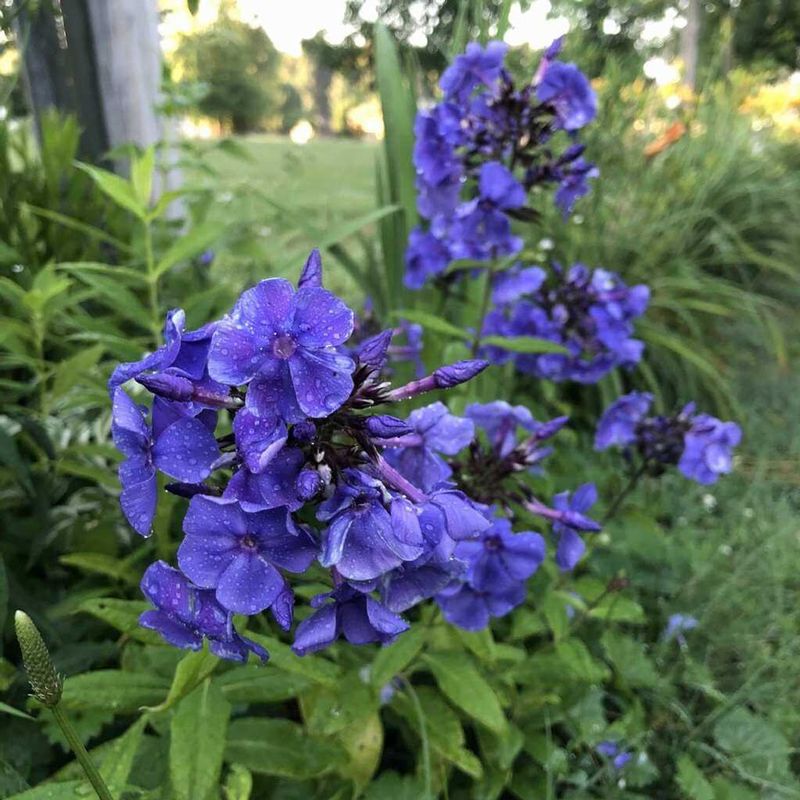Michigan gardens burst into life with the right perennials, and phlox varieties rank among our state’s most reliable performers. These hardy bloomers handle our cold winters and hot summers with ease, rewarding gardeners with waves of colorful flowers and sweet fragrance.
Whether you’re dealing with sandy soil up north or clay-heavy ground in the southeast, there’s a phlox variety perfectly suited for your Michigan garden.
1. Garden Phlox ‘David’
The pristine white flowers of ‘David’ brighten up my back garden from July through September. I’ve found this variety incredibly resistant to powdery mildew, a common problem in Michigan’s humid summer air.
During evening garden parties, guests always comment on its sweet vanilla scent that intensifies at dusk. The sturdy stems rarely need staking, even after our summer thunderstorms roll through.
2. Creeping Phlox ‘Emerald Blue’
Early spring in Michigan can feel endlessly gray, until ‘Emerald Blue’ carpets the ground with lavender-blue blooms. This low-growing variety thrives in our state’s rocky, well-drained soils and creates stunning cascades over retaining walls.
After five years in my front yard border, it’s spread to form a dense mat that completely smothers weeds. The needle-like evergreen foliage provides winter interest when most other perennials have disappeared beneath the snow.
3. Woodland Phlox (Phlox divaricata)
For those shady spots under Michigan’s abundant maple trees, woodland phlox offers the perfect solution. The soft blue flowers appear just as spring ephemerals fade, bridging the gap before summer perennials take over.
My patch started with just three plants and now covers nearly 15 square feet of dappled shade. The loose, informal growth habit pairs beautifully with ferns and hostas that dominate many Michigan woodland gardens.
4. Moss Phlox ‘Candy Stripe’
Talk about a conversation starter! The pink and white striped blooms of ‘Candy Stripe’ look almost too perfect to be real. Each spring, this low-growing phlox transforms my rock garden into a sea of bicolor flowers.
Hardy to zone 3, it laughs off our bitter Michigan winters and bounces back stronger each year. The dense mat of foliage stays green well into December in my garden near Grand Rapids, providing structure even after the growing season ends.
5. Summer Phlox ‘Bright Eyes’
Mid-summer gardens often hit a lull, but ‘Bright Eyes’ keeps the show going with its pink flowers featuring deep rose centers. The color combination reminds me of Michigan’s summer sunsets over Lake Michigan.
Butterflies absolutely swarm this variety in my garden, making it a focal point for wildlife watching. Despite our clay soil in southeast Michigan, ‘Bright Eyes’ performs reliably when planted in raised beds with improved drainage.
6. Phlox paniculata ‘Laura’
Purple flowers with striking white centers make ‘Laura’ stand out even in Michigan’s most challenging summer heat. The rich color doesn’t fade like other varieties, maintaining its vibrancy through August when many garden plants look tired.
After trying numerous phlox varieties in my humid river valley garden, ‘Laura’ has proven most resistant to the powdery mildew that plagues many others. Cutting a few stems for indoor arrangements actually encourages more blooms, extending the display into early fall.
7. Prairie Phlox (Phlox pilosa)
Native to Michigan’s vanishing prairie habitats, this wildflower brings ecological value alongside beauty. Hummingbirds frequently visit the fragrant pink blooms in my native plant garden.
Unlike fussier garden varieties, prairie phlox thrives with minimal care once established. During our occasional summer droughts, it continues flowering while imported varieties struggle. The hairy stems and leaves give this plant its Latin name (pilosa) and help it resist deer browsing—a major plus in my rural garden.
8. Phlox paniculata ‘Nicky’
The deepest, richest magenta flowers belong to ‘Nicky’—so intense they almost glow at dusk in my Michigan garden. This variety stands tall at nearly 4 feet, creating a perfect backdrop for shorter summer bloomers.
Even in heavy clay soil, ‘Nicky’ grows vigorously when given a sunny spot. The fragrance carries across the garden on warm evenings, making it perfect near patios or walkways. A quick shearing after the first bloom often rewards me with a second flush of flowers in September.
9. Meadow Phlox (Phlox maculata)
Less common in nurseries but worth seeking out, meadow phlox thrives in the moist areas of my Michigan garden where other plants struggle. The spotted stems give rise to its species name ‘maculata’ and add visual interest even before the pink flowers appear.
Unlike garden phlox, this native species blooms earlier—usually starting in June when many spring flowers have finished. My plants near the downspout have doubled in size yearly, creating a magnificent colony that requires zero supplemental watering, even during July dry spells.
10. Phlox paniculata ‘Blue Paradise’
Morning brings true blue flowers to ‘Blue Paradise,’ while evening transforms them to a mystical purple—a color-changing show I never tire of watching. The chameleon effect happens most dramatically during our Michigan August heat waves.
Planted near my patio, this variety’s intense fragrance fills the air on summer evenings. Hummingbird moths frequently visit at dusk, adding movement to the garden scene. Despite its delicate appearance, ‘Blue Paradise’ stands strong through our unpredictable Midwest weather, from spring frost to summer storms.

